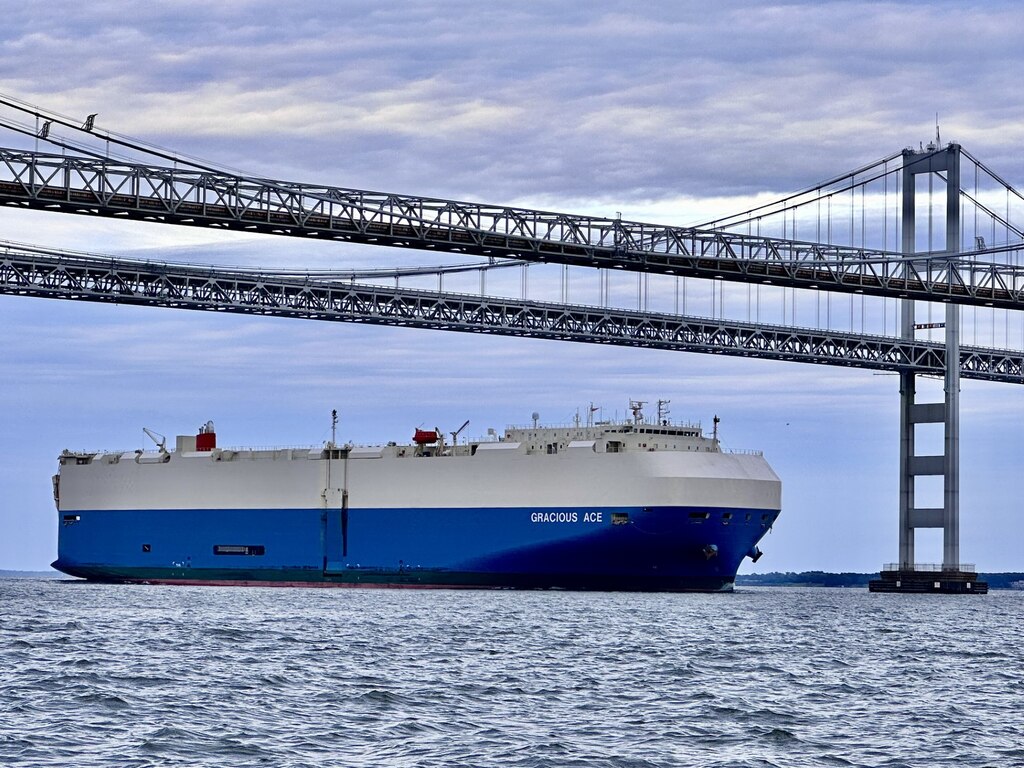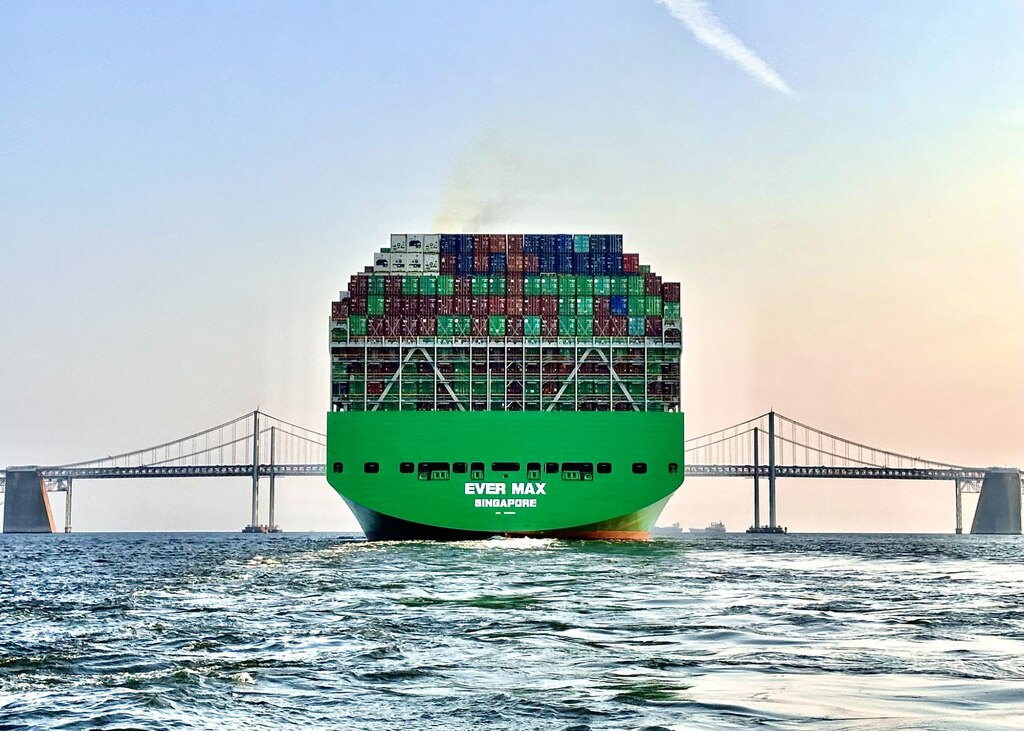Even before the tragic collapse of the Key Bridge last week, the outstretched, cramped travel lanes of the Chesapeake Bay Bridge had been known to make nervous drivers grip their steering wheels a little tighter.
The dual-spanned, 4-mile-long bridge, which opened in 1952, is among the world’s longest over-water structures. Like the Key Bridge, it is among the 3% of bridges in the country to fall under the “fracture critical” category, meaning the entire structure could collapse if certain supports give way. And, like the Francis Scott Key Bridge, the Bay Bridge straddles Maryland’s well-trafficked shipping channels. Container and cruise ships routinely pass underneath.
In the post-Key era of heightened bridge scrutiny, engineers have zeroed in on similar vulnerabilities in the bridges, particularly around the support “piers,” or giant concrete columns that anchor the bridge in the water.

In the wake of other disasters, such as the 2007 Minneapolis bridge collapse, former transportation officials assessed the Key and Bay bridges and termed them to be structurally sound, but it’s unclear to what extent, if any, they ever considered protecting the piers supporting the bridges.
The Baltimore Banner thanks its sponsors. Become one.
The Bay Bridge has proven costly to maintain. It is undergoing an expansive re-decking project to reinforce the road surface. It’s a few miles south of where the Ever Forward cargo ship ran aground in the Chesapeake Bay in 2022, a hint of the volatility of commercial shipping traffic.
Well before the Key Bridge collapse, the age of the Bay Bridge and the complexities of managing it had transportation officials pondering its future.
Linwood Howell, an Austin, Texas-based engineer who has worked as a contractor inspecting bridges, said conversations about protecting the Bay Bridge piers should have taken place long ago. He predicted that significant pier protection would be even more expensive for the Bay Bridge because it sits in water about 50 feet deep, as opposed to the 30-foot-deep channel the Key Bridge spanned.
Considerations around expenditures and budgets, Howell said, explain why “nothing has been done.”
“As an engineer in a state agency, you look at the ships, you run the numbers and realize just how vulnerable the piers are, and how difficult and expensive it would be to protect against the risk of ship collisions,” Howell said. “You do that and realize how hopeless it would be to convince the boss, and the boss’ boss, that something should be done.”
The Baltimore Banner thanks its sponsors. Become one.
He added: “That’s why it takes regular disasters to keep the political and bureaucratic focus on the problem long enough to get something done.”

In response to questions from The Baltimore Banner, Maryland Secretary of Transportation Paul J. Wiedefeld said the state transportation authority’s office of engineering and construction is “looking at options with the U.S. Coast Guard on the feasibility of increased pier protections for Bay Bridge and what’s possible in the navigation channel.”
“With the Key Bridge incident in mind, there has been a renewed focus on pier protection at the Maryland Transportation Authority’s … signature bridges, including the Bay Bridge,” Wiedefeld said.
He added that the agency will “strongly consider any [National Transportation Safety Board] recommendations from the Key Bridge investigation and determine their feasibility for future design and modifications.”
Abi Aghayere, a professor of structural engineering at Drexel University, said it appeared the piers of the Bay Bridge have a protection system in place, but it was unclear if they are designed for a 35-million-pound force, which is what he estimated would be the result of a hit from a 100,000-ton ship traveling at 8 knots.
The Baltimore Banner thanks its sponsors. Become one.
“I would think that, at a minimum, they should design dolphin protection systems around the pylons that can resist the massive impact force and absorb the energy from a direct hit from the huge container ships that I see in the photos, and thus prevent a direct collision of the ships with the pylons,” Aghayere said.
He referenced the Delaware Memorial Bridge protection project as an example.
R. Shankar Nair, a civil engineering expert, said the Bay Bridge’s piers don’t appear to be capable of withstanding such a hit as currently designed.
“Protective measures could be [and should be] added now,” he said.
As for the “fracture critical” nature of the Bay Bridge, Dave Beck, an engineer who assisted with finding mistakes in the Big Dig tunnel and bridge project in Boston, said there was a “big difference” between the Bay and Key Bridges in that the Bay Bridge is a suspension bridge.
The Baltimore Banner thanks its sponsors. Become one.
That meant that, if one of the support piers of the Bay Bridge is knocked out, it shouldn’t lead to the same type of cascading collapse seen with the Key Bridge, Beck said.

As for protecting the Bay Bridge, Beck said that reinforcing the piers would be almost too expensive to be feasible, and he would focus on “keeping ships as far away from those piers as possible.”
A number of considerations will go into designing what that looks like, Beck said, depending on the channel and its currents.
“Those piers,” Beck said of the Bay Bridge, “are rather un-robust.”
Baltimore Banner data journalist Ramsey Archibald contributed to this story.





Comments
Welcome to The Banner's subscriber-only commenting community. Please review our community guidelines.